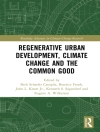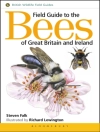The common fig Ficus carica L. is an ancient fruit native to the Mediterranean. Dried figs have been successfully produced and processed in arid regions with little sophisticated infrastructure for centuries. Figs are rich in fibre, trace minerals, polyphenols and vitamins, with higher nutrient levels than most fruits.
Advances in agricultural production and postharvest technologies have not only improved the efficiency of dried fig production but have facilitated the development of high value fresh fig industries both for export and domestic markets. The result is high quality fresh figs that are marketed internationally throughout the year.
This book provides a comprehensive summary of fig growing, processing and marketing from a scientific and horticultural perspective. It is comprised of 19 chapters that include in-depth discussions of:
History of fig cultivation;
Physiology;
Breeding and cultivars;
Propagation;
Site selection and orchard establishment;
Nutrition and irrigation management;
Pollination management;
Integrated pest management;
Greenhouse production;
Harvesting, dried and fresh fig processing;
The medicinal uses of figs; and
World fig markets.
The Fig: Botany, Production and Uses is a comprehensive applied resource for academic researchers, as well as producers, processors, and marketers of dried and fresh figs.
Mengenai Pengarang
Ali M. Yavari is a private pomologist and consultant. Mr. Yavari received his M.S. in horticulture (Pomology) from the University of Urmia, Iran. Mr. Yavari has expertise in all aspects of fruit crops production as well as interacting worldwide with commercial growers and researchers in the field of fruit production, mainly tropical and subtropical fruits. His experiences in fig production are mos harvesting and exporting issues, and training courses for orchardists. He provides public and private sectors with designing project design and writing proposals related to fig production and other tropical and subtropical fruits.












